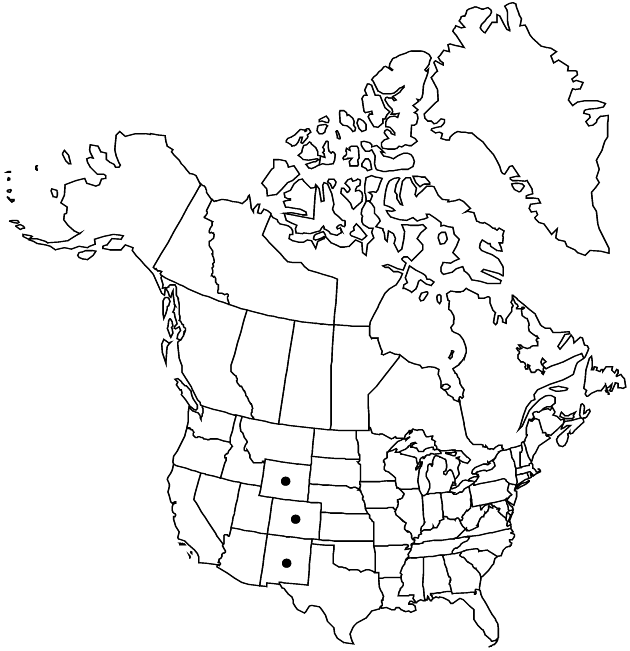Difference between revisions of "Parthenium alpinum"
Fl. N. Amer. 2: 285. 1842.
FNA>Volume Importer |
FNA>Volume Importer |
(No difference)
| |
Revision as of 18:48, 24 September 2019
Perennials, 1–2 cm (underground caudices 2–5+ cm, branched; plants cespitose or forming mats). Leaf blades oblanceolate to spatulate, 6–18(–35) × 1–3(–4+) mm, margins entire, faces strigilloso-sericeous (gray) and obscurely gland-dotted. Heads ± disciform, borne singly. Peduncles 0–5(–30) mm. Phyllaries: outer 5–8 ± linear, 4 mm, inner 5–8 ± orbiculate, 4–5 mm. Pistillate florets 5–8; corolla laminae 0 (tubes ± compressed, obscurely 2–4-lobed). Disc florets 18–28+. Cypselae oblanceoloid, 4 mm (narrowly winged); pappus-like enations 2, erect to spreading, ± subulate, 0.5–1 mm (a third, ± subulate element sometimes at apex of adaxial face). 2n = 36.
Phenology: Flowering May–Jul.
Habitat: Shale and calcareous outcrops, red clays
Elevation: 1300–1700 m
Distribution

Colo., N.Mex., Wyo.
Discussion
Parthenium alpinum is in the Center for Plant Conservation’s National Collection of Endangered Plants.
Selected References
None.